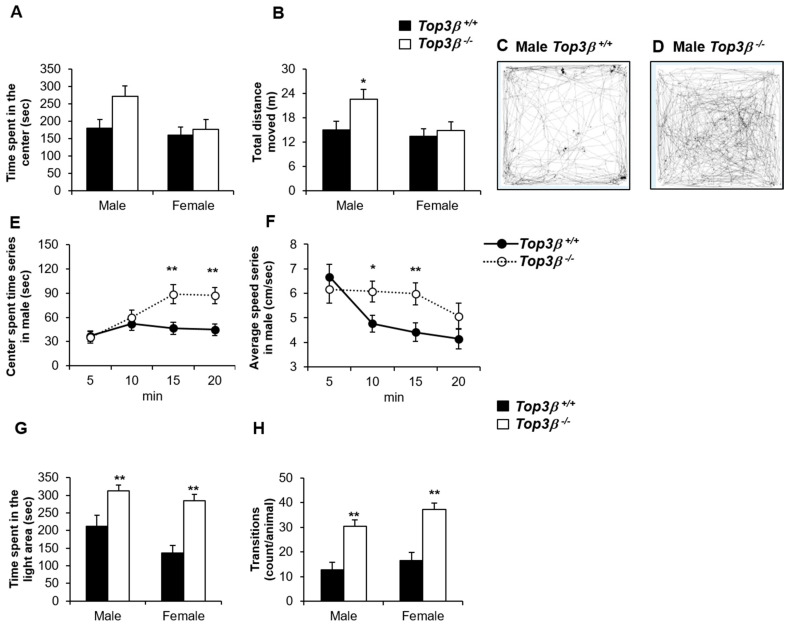Figure 2.
Anxiety-like behavior is lower in Top3β−/− mice. Open field experiments were carried out with 9 week old Top3β−/− and Top3β+/+ mice (A–F). (A) Time spent at the center area, (B) Total distance moved on the arena. Both A and B were significantly decreased in male Top3β−/− mice than in male Top3β+/+ mice. (C) A representative image showing the trace of movement for 20 min for male Top3β+/+ in the open field test. (D) A representative image showing the trace of movement for 20 min of male Top3β−/− mice in the open field test. (E,F) Graphs showing the time spent in the center of the arena (E) and the average speed in the arena (F) every 5 min with a total of 20 min of observation. Top3β−/− mice showed a gradual increase of center spent time without showing decreased average speed as time elapsed. Light-dark box experiment was performed with 20 weeks old Top3β−/− and Top3β+/+ mice (G,H). (G) Both sexes of Top3β−/− mice showed significantly longer time spent in the light area and higher number of movement transitions between boxes than those of Top3β+/+ mice (H). For the open field test, six mice were used for each group (female or male wild or mutant mice). For the light-dark box test, eight mice were used for each group except for the male mutant group which used seven mice for the test. * p < 0.05; ** p < 0.01.

